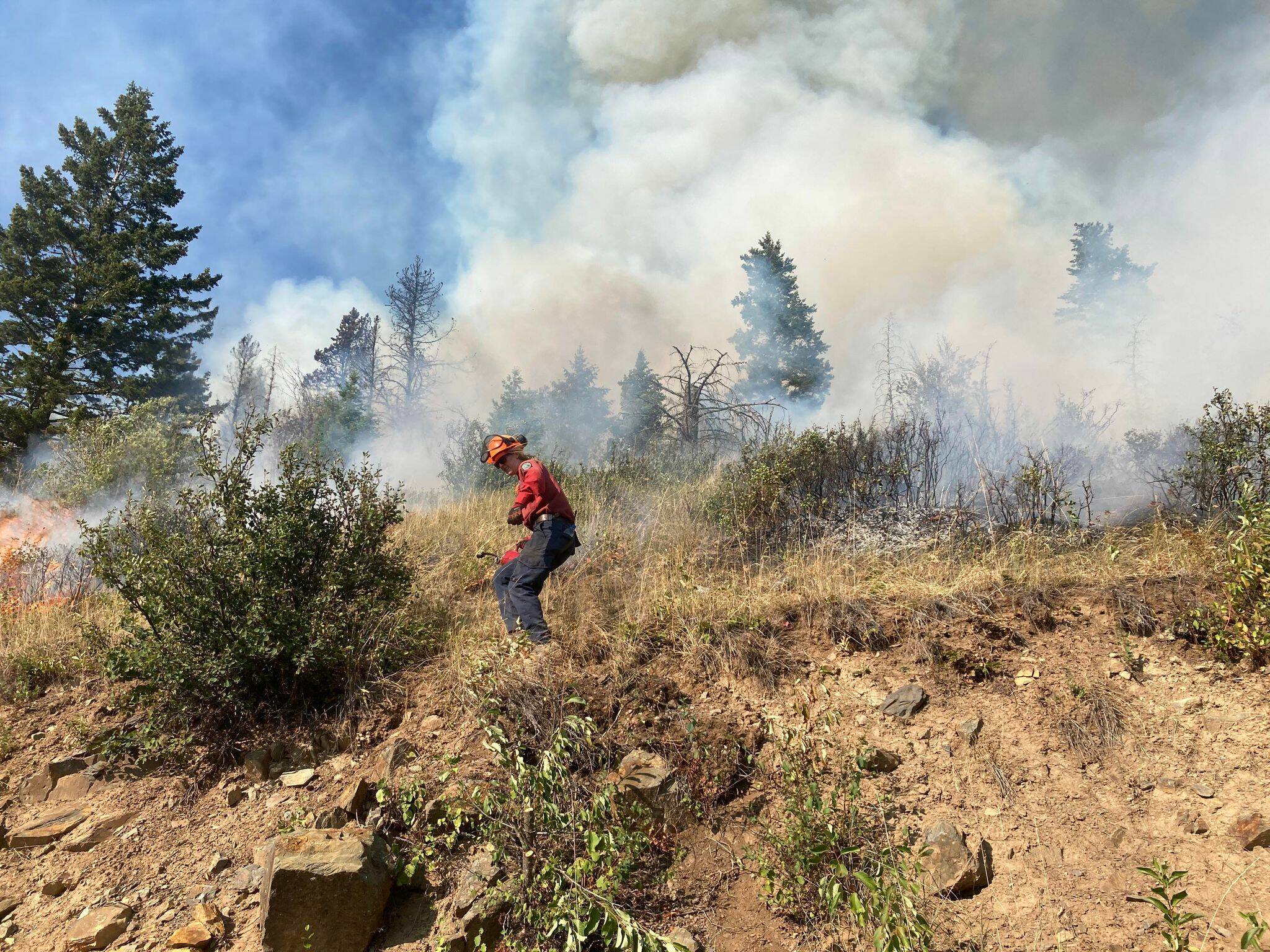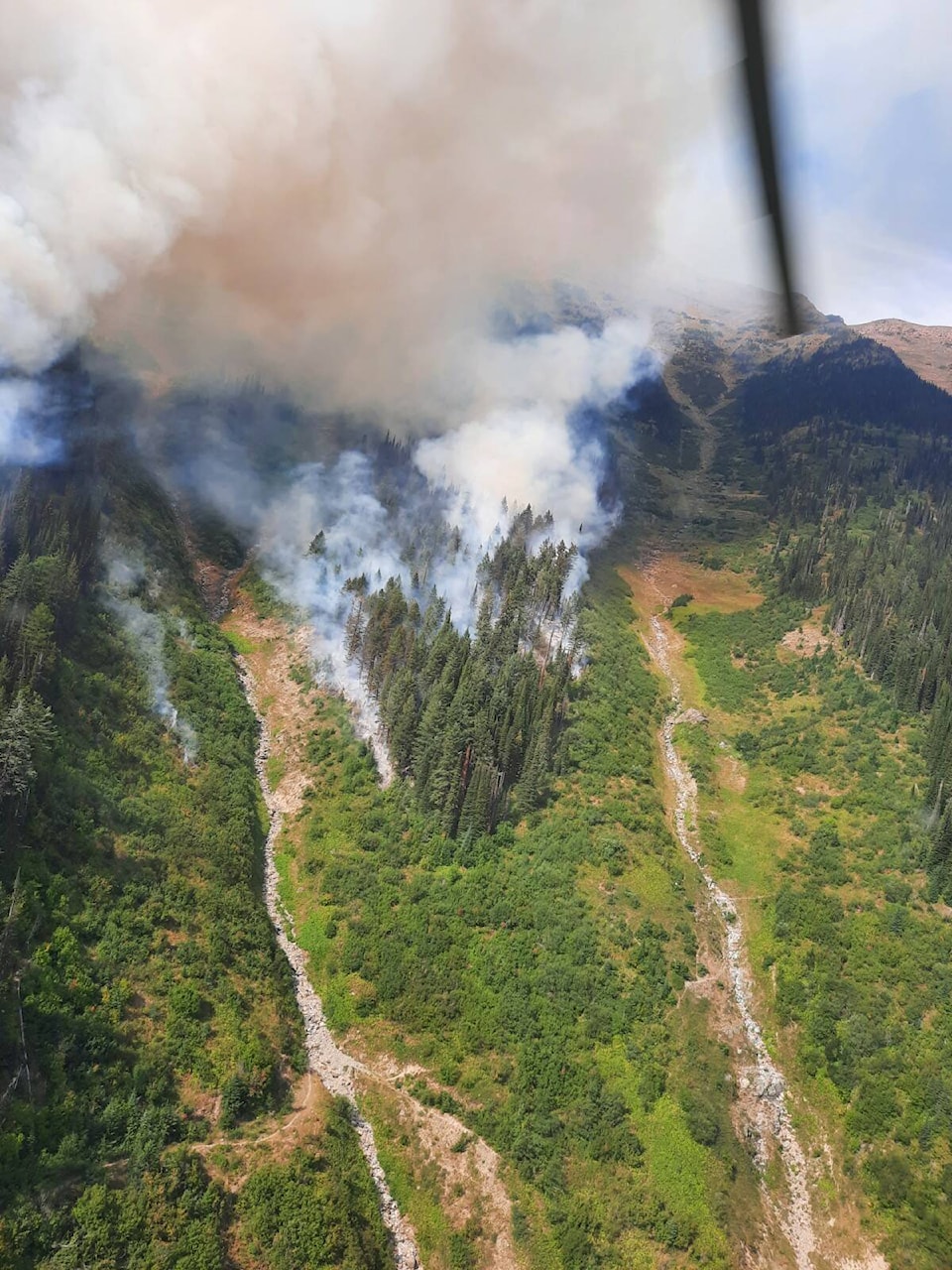While the prescribed burn on Bull Mountain near Cranbrook is not yet entirely complete, the BC Wildfire Service says it was a successful operation and crews are still on site.
The BCWS says this was a unique opportunity to support the Ministry of Lands, Water and Resource Stewardship Habitat Biologists in restoring Bighorn Sheep habitat by returning fire to the natural landscape.
“The fire remained within the predetermined perimeter and steadily maintained the fire behaviour necessary to successfully achieve objectives,” BCWS said in an online update. “Crews will remain onsite to monitor the fire [and] work on mop-up, and possibly complete some hand ignitions if required on small pockets of unburned fuel.”
Kim Wright, Information Officer with the BC Wildfire Service adds that conditions need to be favourable for a prescribed burn.
Alpine areas tend to see fall and winter conditions much quicker than the valley bottom.
“The optimum window is dry enough to burn, but not so dry that we run the risk of the fire going outside of the predetermined perimeter and burn in a way that the smoke will have minimal impact,” Wright said. “Typically burning conditions for prescribed fires are most favourable in the spring and fall. At approximately 1,500 metres, this is a high elevation burn where fall conditions arrive sooner than it does in the valley bottoms.”
Wright said that because of the site elevation, only a small window of opportunity exists where fuel conditions and weather are suitable for this type of burn.
“This time of year, the daylight hours are shorter, overnight recoveries are better, and the nights are colder. These types of conditions offer the opportunity to successfully complete this prescribed fire,” Wright said.
Sheep rely on this area during the summer and transitional months, the BC Wildfire Service said in their update.
“This burn will increase sightlines for predator avoidance as well as increase forage quality and quantity. It will rejuvenate browse species, reduce forest ingrowth, and create a mosaic of open and closed habitat for not only Bighorn Sheep but other associated species,” reads the update.
Prescribed burns also help to reduce risks of catastrophic wildfires in the area. Reintroducing fire to previously fire-suppressed landscapes can break up the fuel on the forest floor, thus reducing the area that wildfires can burn in.
The smoke that blanketed much of the region over the long-weekend was from several fires, including two in our region, and wildfires south of the Canada-US border.
The City of Cranbrook explained that smoke from large fires across the border in Idaho and Washington moved into the southern part of B.C.
As of Sept. 2, campfires are once again allowed in the Southeast Fire Centre. That said, there are still bans on open burning — Category 2 and 3 fires.
“Anyone lighting a campfire in an area where campfires are allowed must maintain a fireguard by removing flammable debris from around the campfire area, attend the fire at all times, and must have a hand tool or at least eight litres of water available nearby to properly extinguish the campfire,” reads an information bulletin from the BC Wildfire Service.

